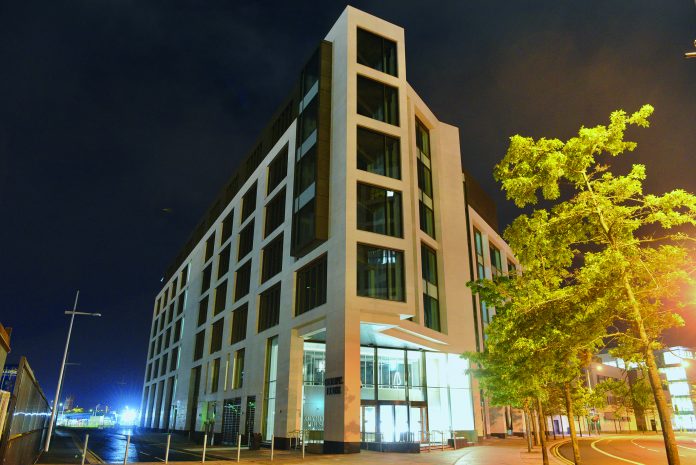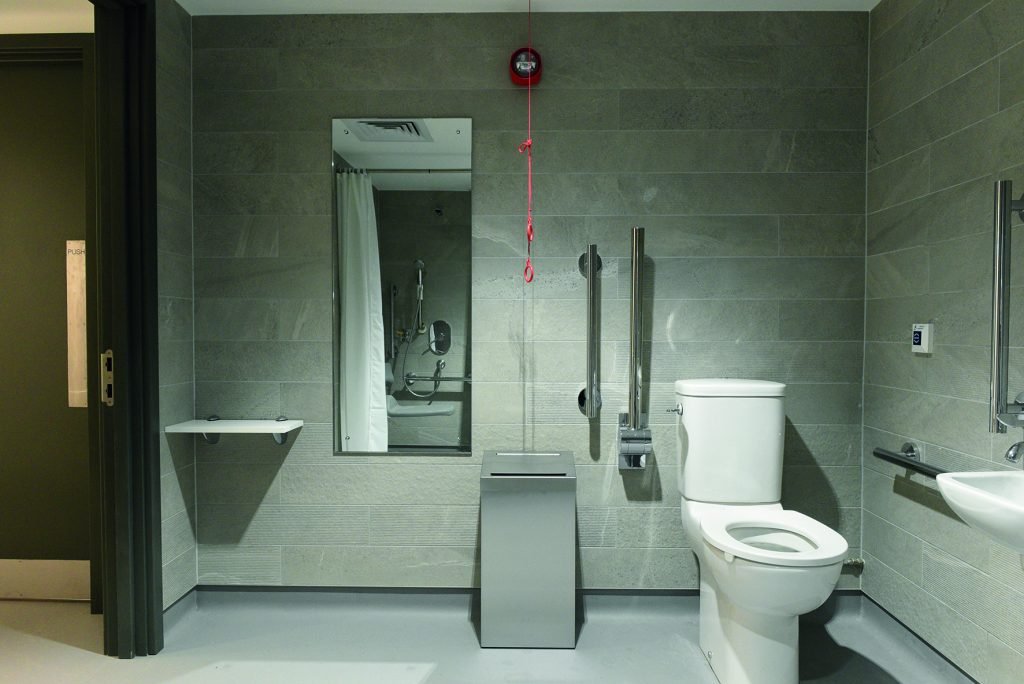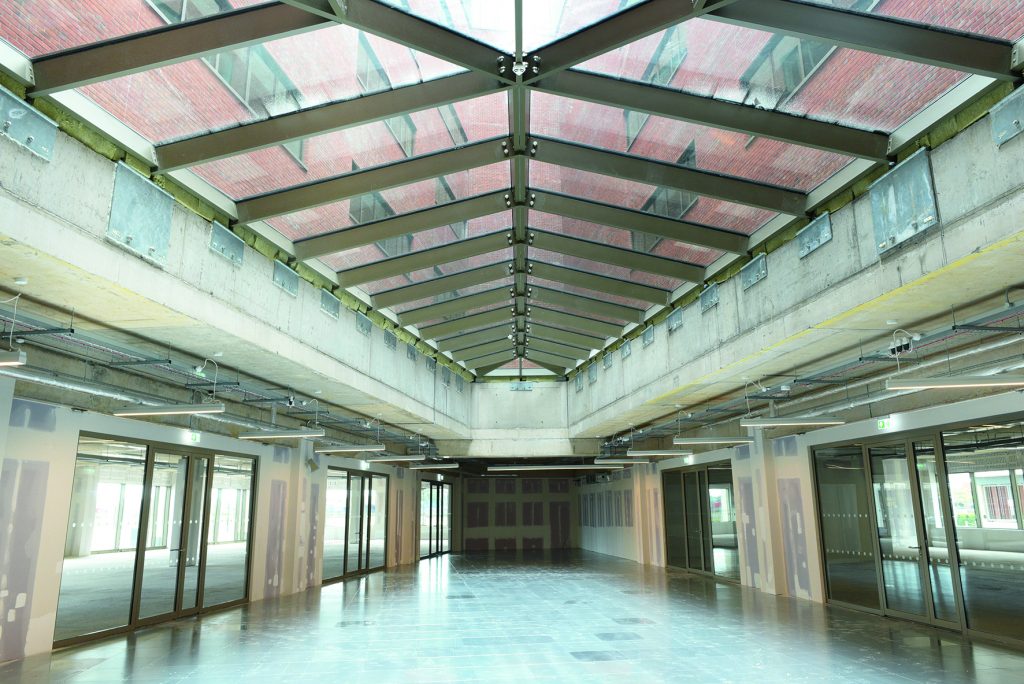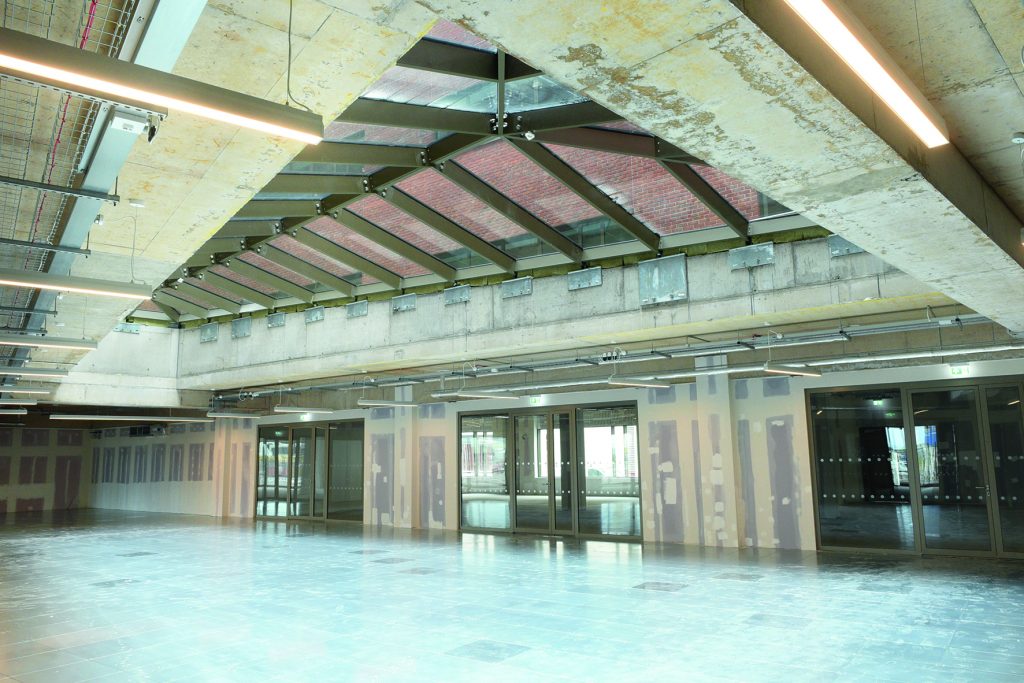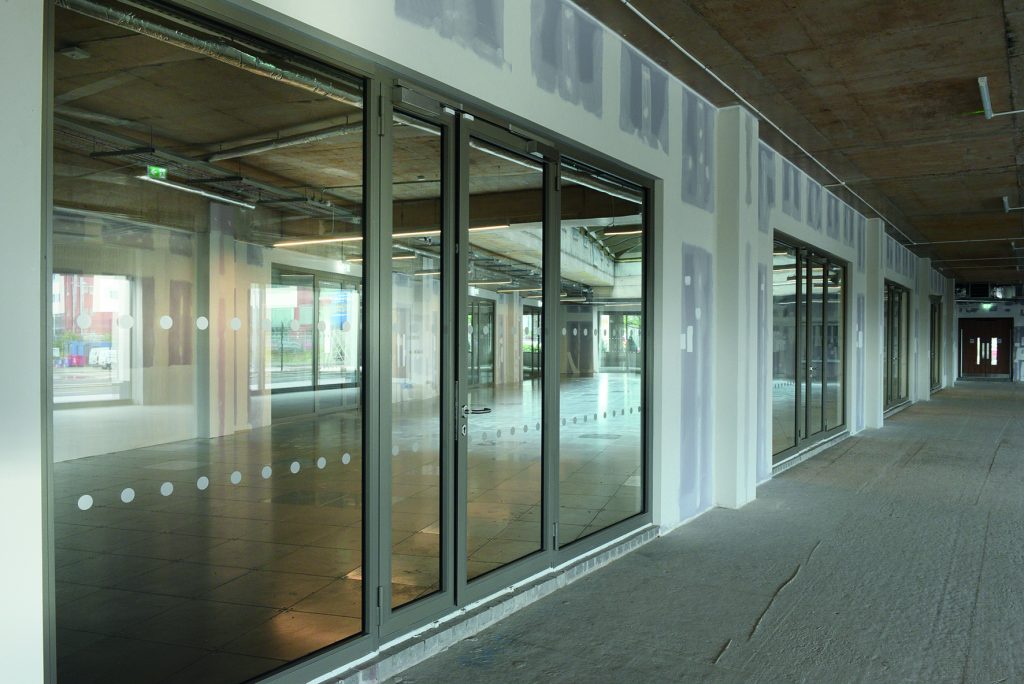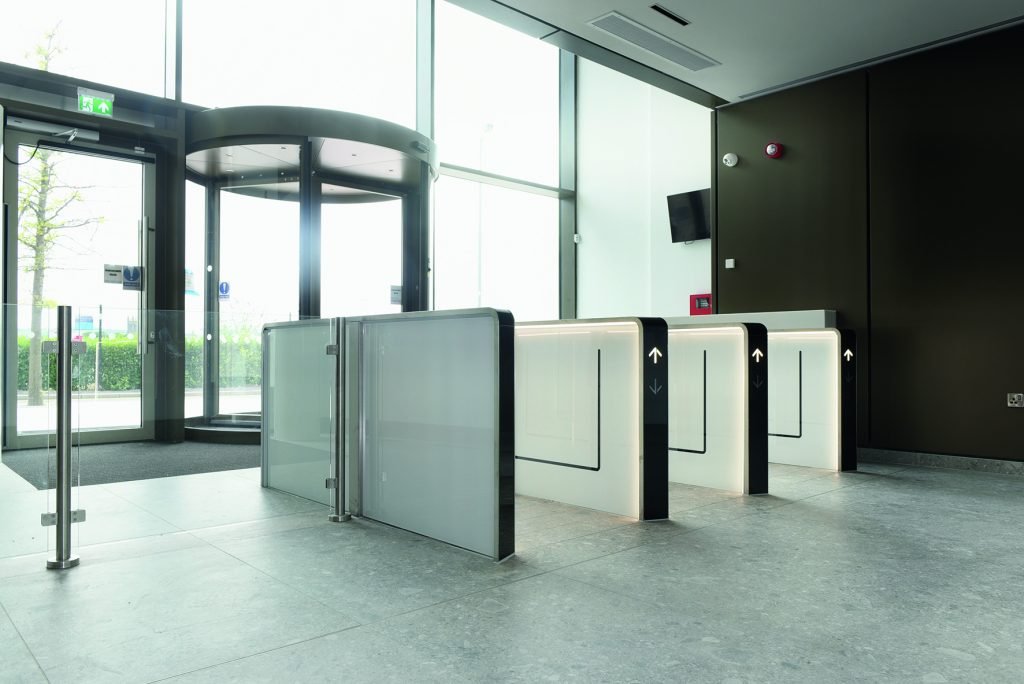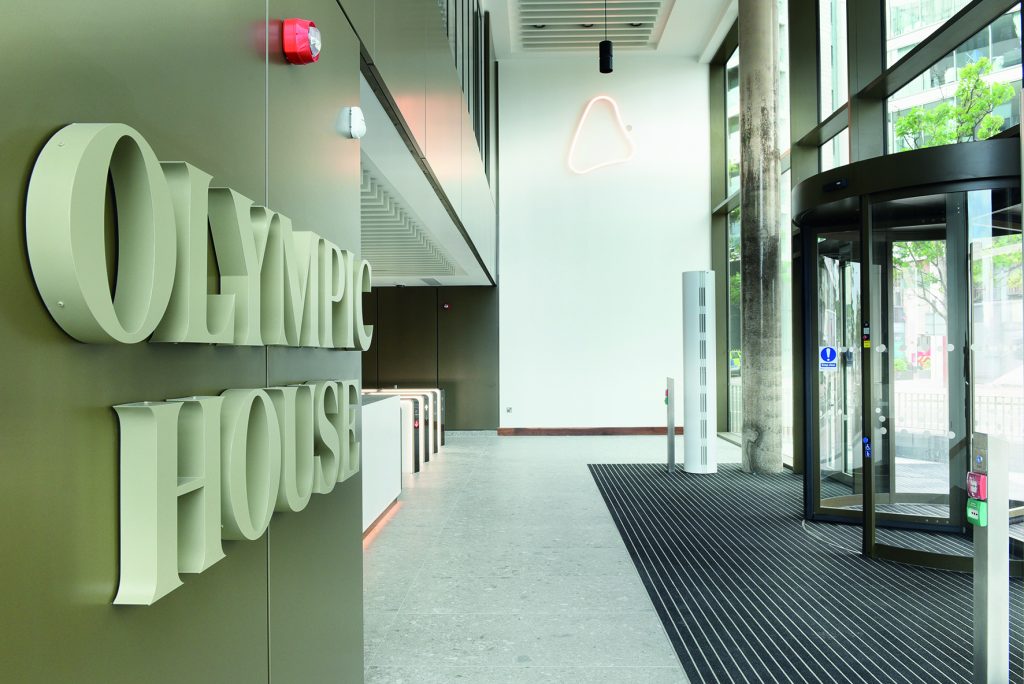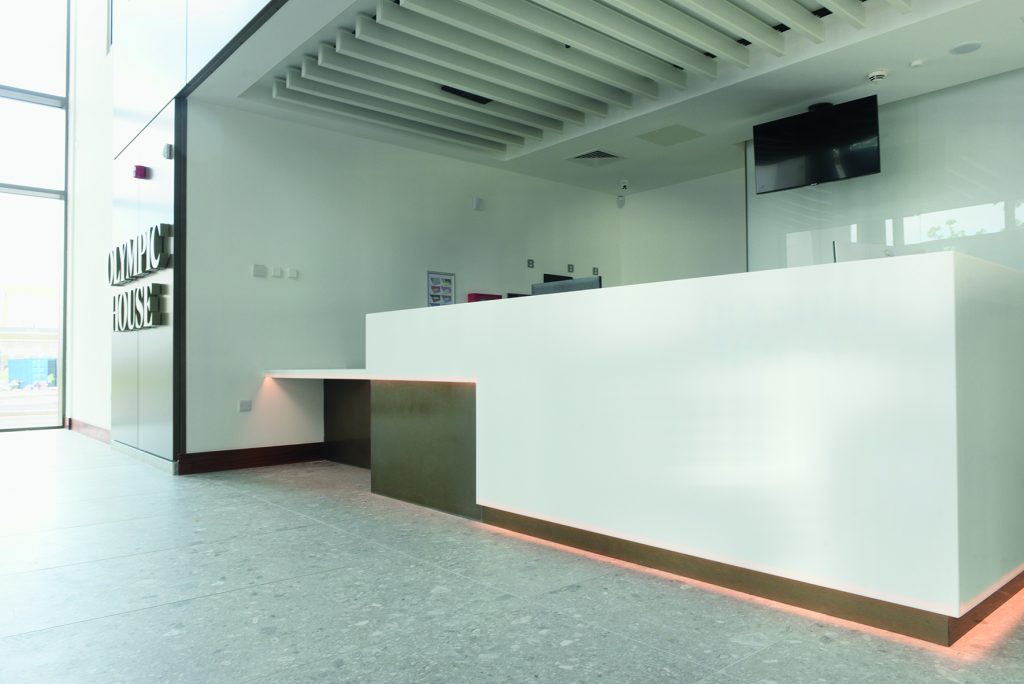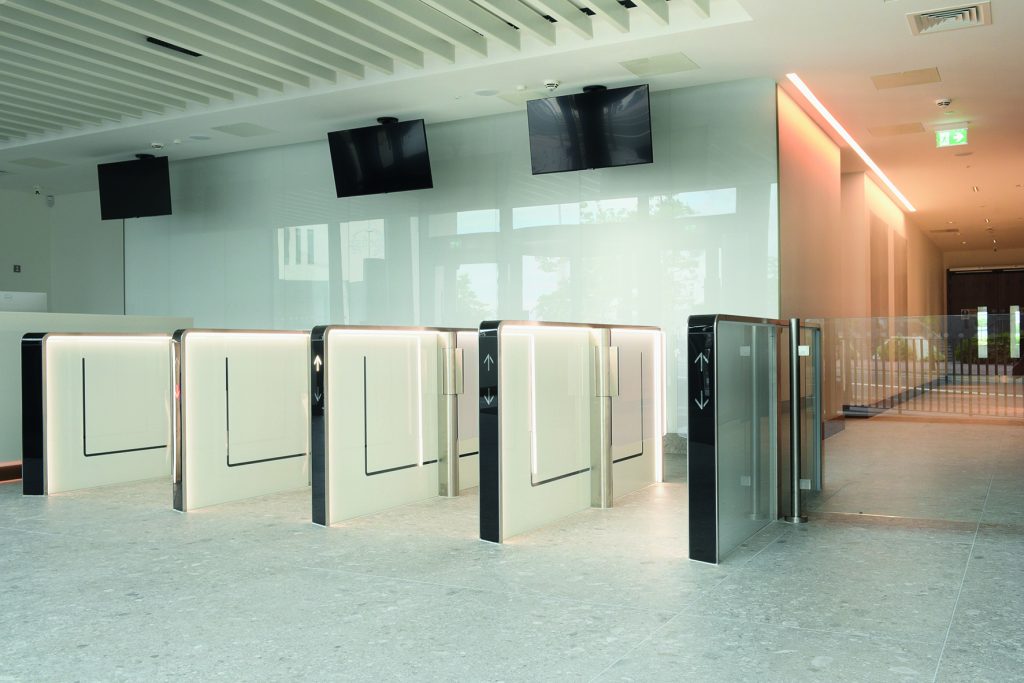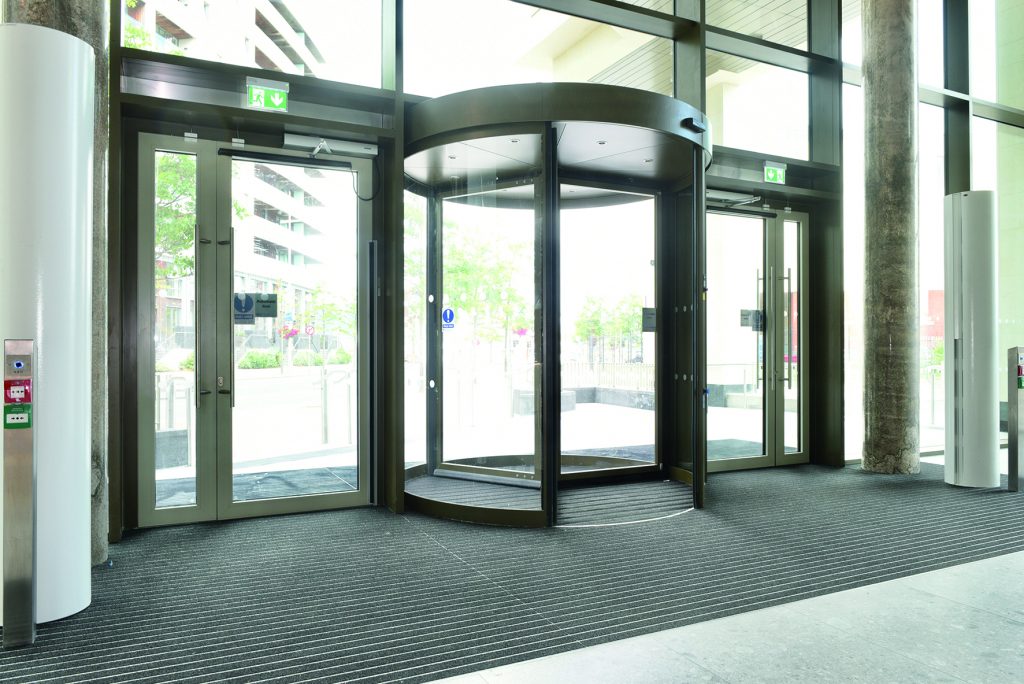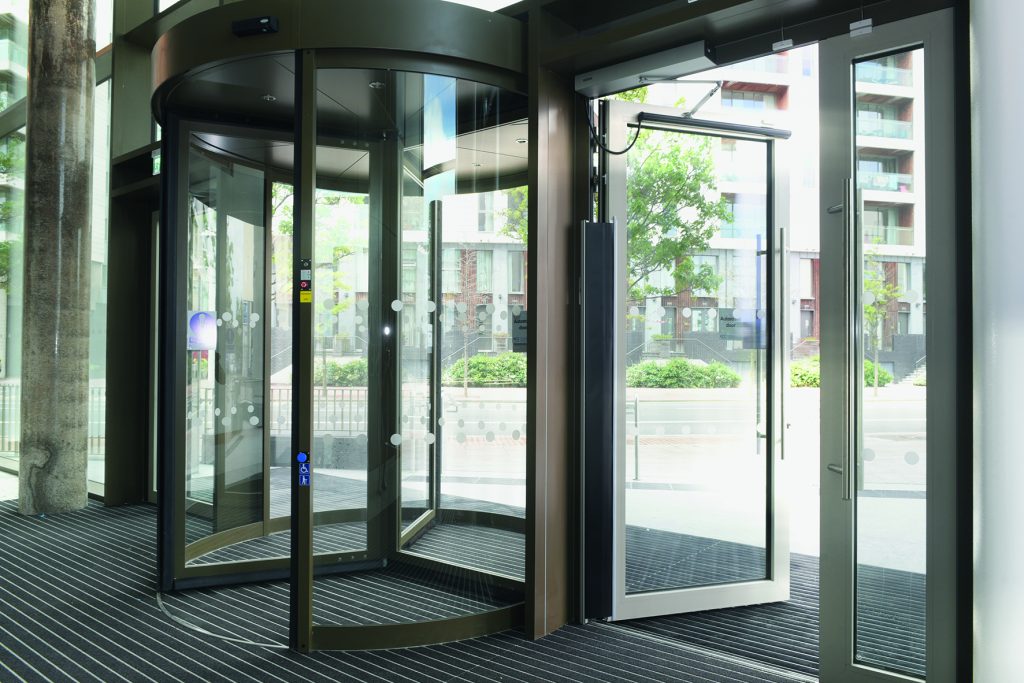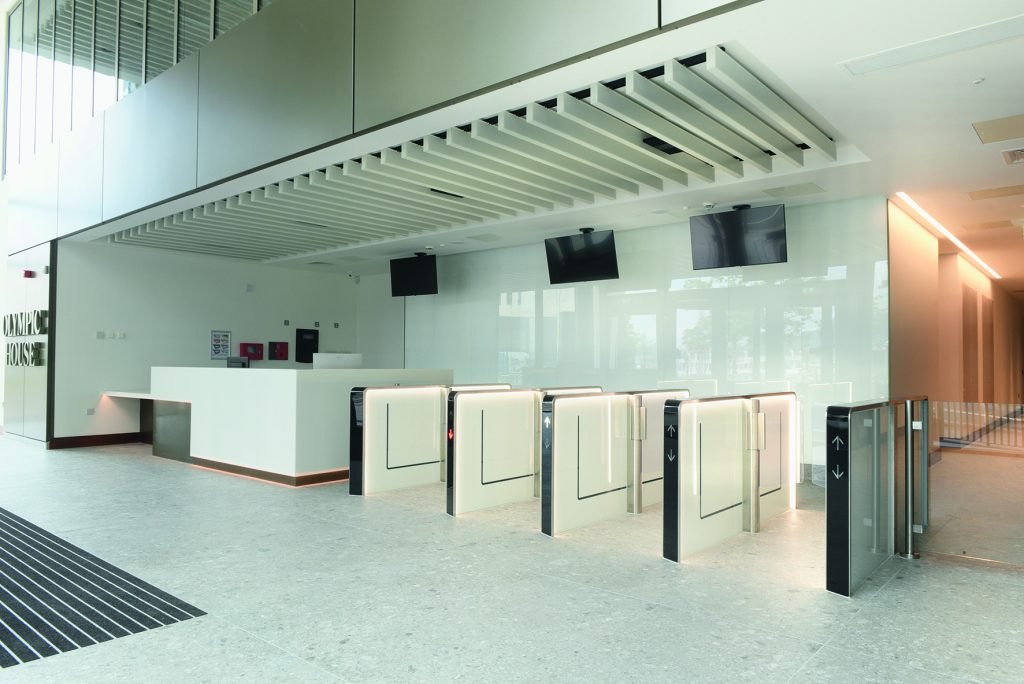Sitting at the heart of Titanic Quarter, OHMG’s newly completed Olympic House project offers Grade A office accommodation…
With its prominent position on the Queen’s Road beside the award-winning Public Record Office of Northern Ireland (PRONI) building, the Olympic House project delivered by OHMG is a spectacular achievement by the Newry firm.
The high quality of Olympic House follows the standard already set by the PRONI building and Gateway Offices. The palette of quality materials used includes “white limestone” offset by generous amounts of floor-to-ceiling glazing to ensure excellent day lighting standards. The two entrances are highlighted by the use of bronze cladding. These and other key design features of the building will be living testimony to the overarching quality objectives set for the Titanic Quarter development.
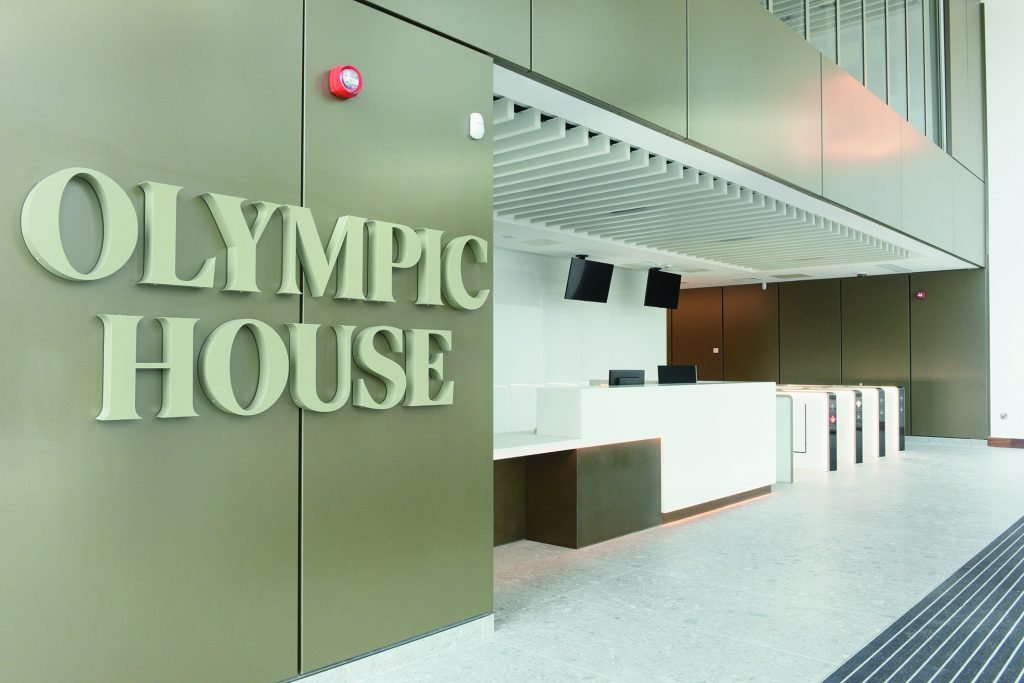
The Grade A Olympic House development consists of two elegantly linked office blocks of six and seven storeys with a basement carpark.
The shell and core fit out involved the provision of toilet cores and lift lobbies on each floor, two passenger lifts, two reception areas on the ground floor and four staircases which includes a feature steel frame staircase with precast concrete treads and landings.
The superstructure consists of a concrete frame with an envelope of stone cladding and extensive curtain walling spanning over two floors in certain areas. Two tower cranes serviced the raising of the framework.
The structure ‘sits’ on a black plinth at ground level with a white granite façade rising upwards, deliberately designed to replicate the neighbouring PRONI building.
Multiple façade alignments and material interfaces required in-depth design co-ordination between OHMG’s supply chain and the client’s design team, said Nigel Spratt, Project Manager for OHMG. “The intricate design required a multitude of meetings between ourselves and specialist subcontractors to co-ordinate interface details, requirements and attendances.”
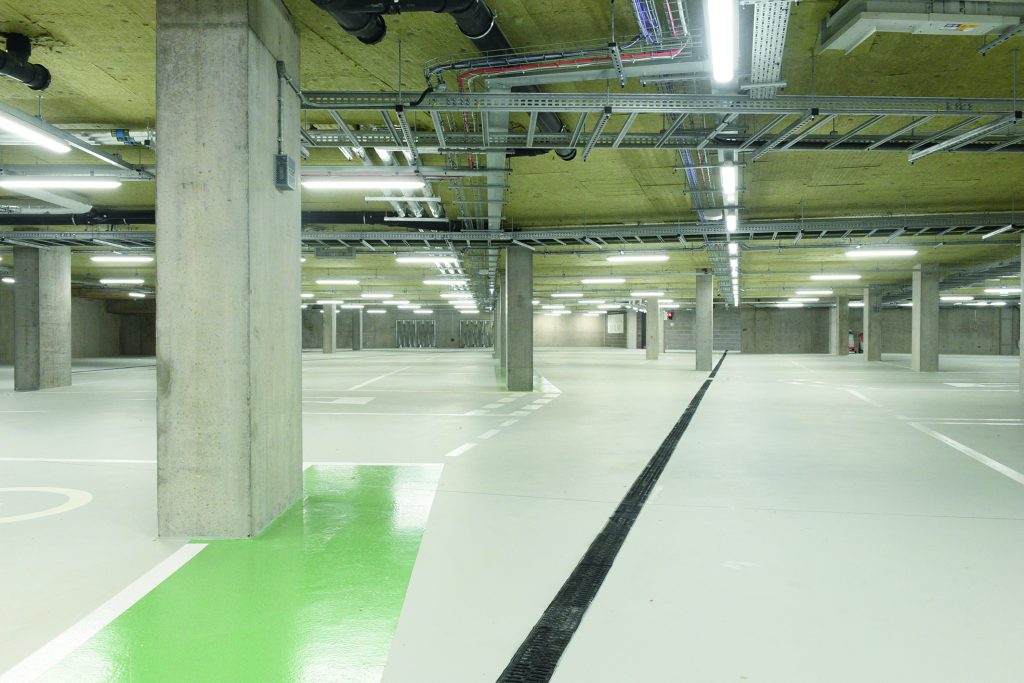
The façade required extensive pre-planning. “It consisted of various technical aspects that included deep window reveals and stone clad sills. Also, at the Queens Road entrance a section of the second floor slab projected out on three elevations effectively cantilevering the structure over the main entrance. This required temporary propping until the roof structure was completed.”
Rainscreen cladding elements were incorporated into the upper level façade design on multiple elevations. A roof terrace on level six overlooks the Harland and Wolff cranes. Five air handling units manufactured in Sweden were delivered and installed at roof level. “Again, there was extensive coordination here,” said Nigel, “to align the correct delivery dates relative to completion of roof finishes and plant supports.”
The roof plant area is enclosed with a bronze perforated plant screen. Bronze is a theme that is consistent throughout the project. “The cladding, plant screen, curtain walling, even the internal feature cladding to both reception areas, are all finished in bronze that sets the standard for the Grade A finishes.”
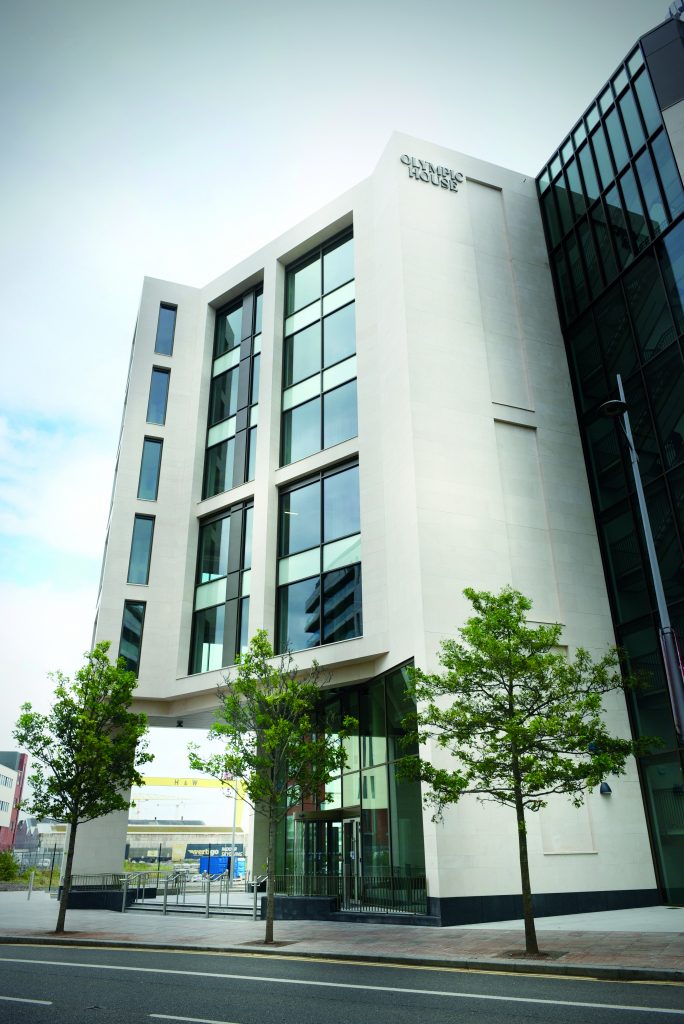
Other features include an internal courtyard finished in a traditional red brick from level one up to level six. A large glazed roof light at level one forms the start of the courtyard, with the central section open to the top of the building.
The building has achieved ‘Excellent’ status from BREEAM and an ‘A’ rating from BER, no doubt helped by the PV panels on the roof and the large rainwater harvesting tank in the basement.
Challenges
“It has been a very complicated project,” said Nigel, “with delays caused by Covid-19 and the consequential impacts on the labour force and materials – there were many materials on extended lead times.
“We also encountered obstructions in the ground when we were excavating for the basement carpark. Being part of the old Docklands there were remnants and contaminated ground, which most likely were related to the shipbuilding process.
“We worked collaboratively with the client’s design team to manage all programme issues which resulted in a successful handover in August this year.”
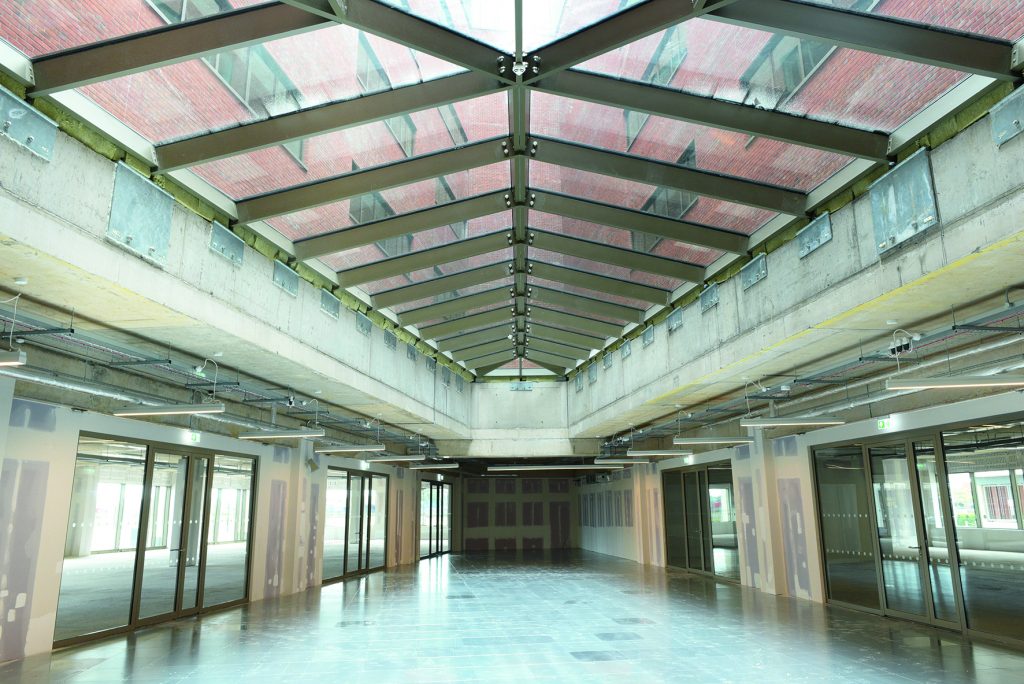 OHMG’s attention to detail and commitment to delivering a Grade A finish has resulted in a visually stunning building, quite able to compete with the high standard of architecture on display at Titanic Quarter. But what, for Nigel, is the most satisfying aspect of the completed project?
OHMG’s attention to detail and commitment to delivering a Grade A finish has resulted in a visually stunning building, quite able to compete with the high standard of architecture on display at Titanic Quarter. But what, for Nigel, is the most satisfying aspect of the completed project?
“For me, it’s the façade,” he said. “As the scaffold dismantle commenced, it uncovered just how unique the building was. It has been a challenging project for everyone involved, but when viewing the build finished, it’s worth all the hard work. It’s a very special building to have in our portfolio.”
Seanie O’Hare, Construction Director at OHMG commented, “This project demonstrates the skills and experience OHMG has in delivering these types of complex buildings. It’s a superb example of how well our project team collaborated with the client and their design team to bring to life this state-of-the-art facility.”
For the full feature on Olympic House, see NI Builder issue 33-4 Aug-Sep:
https://online.flippingbook.com/view/779694583/48/



